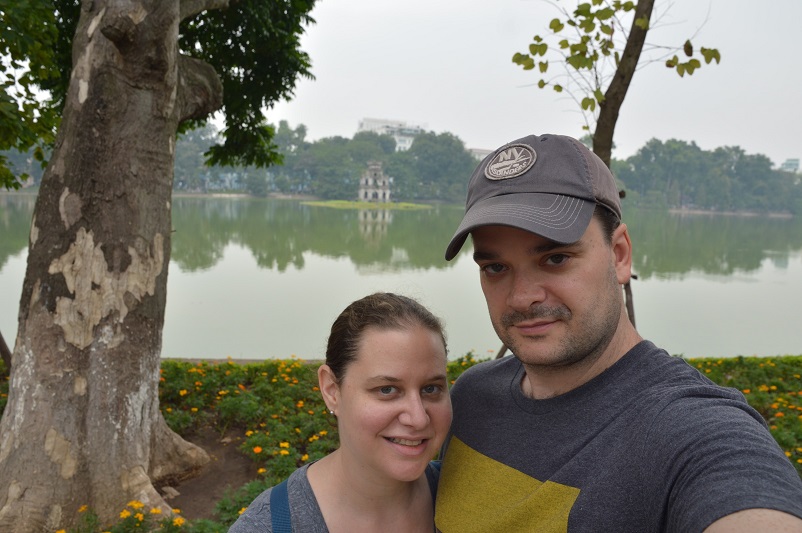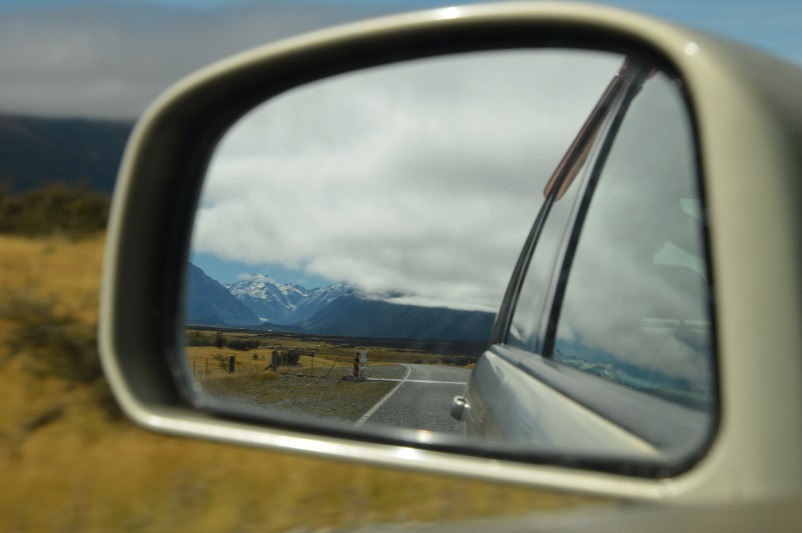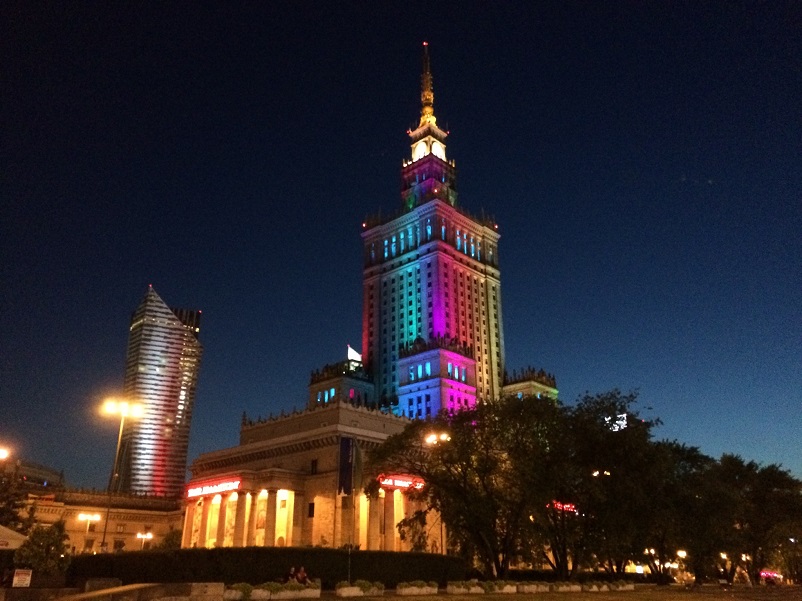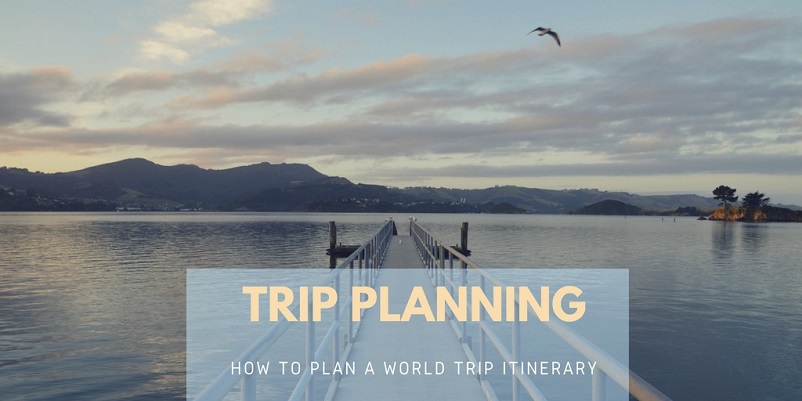Last Updated on 12th November 2019 by Sarah and Justin
So you’ve decided you want to quit your job and travel the world. But thinking about where to go and when and for how long is completely overwhelming. Planning a world trip itinerary can indeed be daunting. It’s easy to get completely confused and overloaded by the vast number of choices you have. But with some organization and tips, it can be done, and more importantly, it can be fun!
We spent 13 months traveling to 27 countries in Europe, Asia, and Oceania. Figuring out where we wanted to go and in what order took quite a bit of planning. In fact, we started planning about 9 months before we left. But once we established some ground rules, we really enjoyed it. So based on our experience, we’re offering tips to help you get organized, get inspired, and have fun planning your trip around the world.
What type of traveler are you?
The first question to ask yourself is how you like to travel. And there are many different components to this question.
Planning style
Are you a super planner or are you a fly-by-the-seat-of-your-pants traveler? If you like everything all figured before you get somewhere, this whole post is for you. If you like to wing it, you may find some of these recommendations a bit much, but the general principles should help guide you. We definitely fall more into the planner category. Due to our own accommodation preferences, budget restrictions, and Sarah’s chronic disease, we needed to plan where we were going and when before we got there. We couldn’t easily just hop a plane from one country to another without notice (Sarah must get advanced approval to fly with her medical device). And to get the most options and the best deals, we always booked accommodations in advance. It worked out that for most of our trip, we had things planned around two months in advance.
Pace of travel
Do you like to spend time really digging deep in a place, or do you like to see lots of different destinations? We started out as the latter type of travelers, and would try to hit as many cities as possible in one vacation. However, as time passed on this trip, we definitely turned into slower travelers. First and foremost, long-term travel is tiring, so it’s nice to give yourself time to rest. Second, jetting from one place to another (between cities, countries, and continents) can give you some sensory overload and confusion. It will take you longer to adjust to a destination. Based on all of this, we tried to mix up how long we spent in places.

What do you like?
Spend some time thinking about what you actually enjoy doing and seeing in travel and in life. Try not to feel like you have to do something just because it’s trendy or because you’ve heard it’s a must-do on a round the world trip. This is your trip. It’s your time, energy, and money so you should go where you want to not where you think you should.
Itinerary planning tools
Before you even start thinking about specific destinations, get organized. To give you some ideas, here are the things we used to help plan our trip.
Microsoft Word calendar template
We used a calendar to map out every day of our trip. In every square, we wrote the city we would be visiting. We started more generally, week by week. But then adjusted it to be specific to the day. It was a helpful way to visualize how long we would be places. And it was also useful to see days of the week in addition to dates. For example, if we were going to be somewhere a bit off the tourist track, we considered not leaving or arriving on a Sunday. Or if a place was known for its party scene, we’d try to be there mid-week. We also used this to track our Schengen Zone days (more on this in the visa section below).
Excel spreadsheet
We’re both big dorks who love spreadsheets. So we made a massive one to track absolutely everything related to our trip including all of our finances (and kept it updated throughout our whole trip). But since post this is about itinerary planning, we’ll focus on that. Before we left home, we pre-booked the first two months of the trip. We used the spreadsheet to track what we had booked (and whether we had pre-paid or not) so we knew what gaps we had to fill in once we got on the road. And of course, we color coded everything so that at a glance we could easily see what we had booked, how much we had spent, and what was left to do.
Google Maps
If you’re a traveler, Google Maps is your best friend. We used Google Maps for both logistics and inspiration. For many parts of the world it will tell you how to get from A to B, but also, once you figure out that it actually takes 27 hours to get from A to B, it can help you find places to stop and explore on the way… places you’ve never even thought of! As an example, several years ago, we were planning a trip and wanted to drive from Gdańsk, Poland to Kaunas, Lithuania. Since Justin is the sole driver on our trips, we knew we’d need to stop for the night somewhere in the middle. We jumped on Google Maps and searched for somewhere centrally located that might also be pretty. We saw a very small lake on the map, zoomed in, and found Gizycko, Poland. After some additional research, we learned there was also a forest, some castle ruins, and a great hotel complete with a bowling alley. Of course it ended up being one of our favorite spots and we never would have found it without doing some serious map investigation.
Google Flights
Sure, Google Flights is great to use to find great deals on flights, but even before you’re ready to do that, it’s a fantastic itinerary planning tool. If we knew we would be in location A and were trying to figure out the best place to go next, you just plug in location A and Google Flights will tell you everywhere you can fly to. And you can filter for direct flights. It’s helpful if you have a list of potential destinations in mind or to get inspiration to new destinations you may have never consdered. Note, we recommend using it on a good old fashioned computer not a mobile device.
Itinerary planning considerations
Once you’re organized, it’s time to do the fun stuff – finding all those amazing places in the world to visit. A combination of dreamy wanderlust and detail-oriented logistics is required. Here is everything we considered when planning our 13-month trip around the world.
Determine your must-see destinations
For most people, a trip like this is a once-in-a-lifetime thing. So make the most of it! Start with your bucket list – what’s a place or experience you’ve always dreamed about? Our #1 bucket list destination was New Zealand, so we knew we absolutely had to get there on this trip. And seeing the temples at Angkor in Cambodia was pretty high on the list too.

After the bucket list, you can move onto the rest of your wish list. This might include countries you’ve never visited or places you know you must return to. In our case, we had never been to Southeast Asia so knew we wanted to spend time in that region. And we loved our first visit to Tokyo, so wanted to get back there again and explore more of Japan (and eat more ramen and sushi).
Where to look for inspiration
Chances are you’ll need some inspiration to decide on places to visit. Good thing there are gazillion places these days to do that. When we were planning, we focused mainly on established travel websites like Rough Guides and Wikitravel, and region-specific websites like Travelfish (for Southeast Asia), Japan Guide, and New Zealand’s tourism website. We also devoured travel blogs of people who had done similar trips. Now, just a few years later, there are blogs for pretty much every destination out there, so it’s easy to quickly get some key information and see some pretty pictures to decide if it’s for you or not. Plus using Instagram and Pinterest to get travel inspiration is now quite common and easy. But we would recommend not just using pictures to guide your journey. Read up on the places that pique your interest so you know what there is to do, how long to spend there, and what a place is really like.
Cross destinations off your list
There will be places that, no matter how much you’d love to visit them, just won’t be feasible to see on this trip. It could be due to budget or geography or logistical complications. Take the time to figure out what they are and remove them from consideration. It might be sad, but it’s a must-do in this process.
Make note of major life events and necessities
Is your sister having a baby? Is your best friend getting married? Do you want to be home for the holidays? These are all questions you should ask yourself and answer before you get into the nitty gritty of planning so if there’s somewhere you really want or need to be at a specific time you can work that into your itinerary. Similarly, if you are like Sarah and have a medical condition that you must manage in a specific way, think about that as well. We returned home for a number of reasons, but the most important one was to see Sarah’s LAM specialist for her bi-annual check-up.
Decide if you want to do a round-the-world ticket
A round-the-world ticket is a great option if you can continue moving in one direction throughout your journey. It doesn’t allow for backtracking (on that ticket). We knew we’d be returning home two times during our trip, which pretty much ruled out the round-the-world ticket for us. But if you don’t have any reasons to backtrack, it’s a good option to consider. If you decide you want to do it, you’ll have some constraints about where you can go and in what order. All companies and airlines offering round-the-world tickets have different rules, so do your research to understand the ramifications before you decide.
Research any visa restrictions
As American citizens and US passport-holders, we were lucky that the only visa requirement that significantly impacted what we wanted to do was the Shengen visa. We could only remain in Shengen Zone countries for 90 days within a 180 day period. We tracked these days carefully during our planning and used our handy dandy calendar template by adding a number in a different color to every day we would be in the Schengen Zone. A few other countries we visited had restrictions. For example, Australia, Japan, New Zealand, and Thailand all restrict the number of days you can stay consecutively, but this didn’t impact our itinerary. Additionally, there were several countries for which we had to buy visas. For Vietnam and Australia, we had to buy visas in advance. For Laos and Cambodia, we could buy visas upon arrival at the airport. These costs and processes may or may not impact your itinerary, but it’s good to be aware of them. The visa for Vietnam was quite expensive, and in retrospect, we should have stayed in the country longer to make the most of it. Last, certain countries require that you have booked a way out when you arrive. We were asked to prove our onward travel plans in South Korea and New Zealand but have heard this can be the case in Thailand as well. This is worth researching and deciding if you want to do some advance planning or take the risk of having to buy a plane ticket while standing at the immigration desk.
Consider your budget
Setting a budget is definitely the first thing you should do in the planning process. Because unless you have unlimited funds, your budget will impact every aspect of your world trip, including your itinerary.
When considering how our budget would impact our itinerary, we broke things down into three categories: transportation, lodging, and living expenses. We started with transportation and figured out the biggest ticket items – our longest flights. We also looked at the places we could travel overland or take budget airlines and came up with a general number. Next, we moved onto lodging. We established a per night average we wanted to stick to across the entire trip. We did a lot of research on hotel booking sites and Airbnb and came up with estimates for each of the major destinations we knew we wanted to visit. And last, we read up on cost of living in those destinations too.
All of that helped us decide how long we would spend where. To state the obvious, certain places in the world are more costly to visit than others. We would have spent much more time in New Zealand and Australia and the Faroe Islands if money were no object. But planning a trip like this, you’ll have to make compromises. Having a lodging average was helpful because if we knew certain places would be higher than that number, we would work to compensate for it in places with more affordable options.
It’s a lot of work, but if you do your research, you’ll feel more comfortable with your decisions and you (hopefully) won’t be blindsided by expenses that have negative consequences for your journey.

Get a good handle on your loyalty program points and airline miles
This step also falls into budget planning, but it can be very helpful when you’re itinerary planning too. We had a lot of miles and points, and we wanted to use as many of them as possible to save money on our trip. But we also actually got some great ideas for our itinerary by looking into all the options associated with our programs. For example, we knew we were going to be in Southeast Asia in December and that we wanted to go home for the holidays prior to further exploring that region. We also love German Christmas Markets. By looking into reward flight options we (okay, it was Justin – he is a master at all this) found an amazing way to accomplish this on miles. All on one reward ticket, we flew from Bangkok to Frankfurt, spent three weeks in Germany, then flew from Frankfurt to New York, spent three weeks there, and then flew back from New York to Bangkok.
Oh and yes, we used a spreadsheet to track all of our points and miles.
Consider the weather
Think about what climates you prefer to travel in, as well as what different places are like during specific times of year. The seasons are flipped in South America, Australia, and New Zealand. There are different rainy seasons in certain countries in Southeast Asia. In Northern Thailand, there is a burning season which we wanted to avoid since we knew would be particularly bad for Sarah’s lungs. Traveling in and among all the seasons means you’ll have to pack more (or buy local supplies). All of these things helped us figure out where we wanted to go when. We found Weather Underground very helpful, especially their monthly averages and historic temperatures.
Planning your world trip itinerary
Finally, after all that, you’re ready to actually start planning your trip. Using all of the above considerations, start big and general. Think about when you want to depart and the regions of the world you want to visit. Using Google Maps and a calendar, see what makes sense. And then, create a skeleton itinerary. Our first skeleton itinerary looked like this:
Leg 1: 3 months in Europe (then return home)
Leg 2: 3 months in Asia (then return home)
Leg 3: 6 months in Asia, Australia, New Zealand, South America
It might be scary to write something like this down, but don’t panic – this is just an outline, and of course you can change it! In the end, we actually didn’t end up going to South America.
Next, start looking at the logistics of traveling from point to point and between the specific countries and cities you want to visit. Use Google Maps and Google Flights to understand the best ways to travel between destinations and the distances and times involved.
And then it’s time to get detailed. Country by country, city by city, write down where you want to go. Then look at accommodation options in those cities. That will help plan specifically how long you want to be in certain places too. For example, we found really great Airbnb options in Krakow and Warsaw, and they were even cheaper if you stayed a week, so we decided to keep our time in Poland to those two cities instead of adding a third city in the middle. Conversely, when we were in Auckland, NZ our accommodation of choice was only available for three nights, so we kept our stay there brief.

Finally, start booking. Yes, in the beginning this can be quite nerve wracking! We nervously hit that first “confirm” button together and then celebrated with a stiff drink. But after a few times, it’ll be just like booking any other vacation. Just consider how you want to book things. Most often you can save money if you make non-refundable bookings, but if you’re not 100% set on your itinerary, you might have to spend a little more to give yourself some flexibility. If you’re using Airbnb, be sure to read the specific cancellation policies because they have a whole bunch of different ones. And of course, keep a detailed account of everything you’ve booked, if you’ve prepaid, and any cancellation deadlines. We also found it helpful to keep track of how we booked things. We used pretty much all the different hotel booking websites out there, so it made it easier for us to pull up confirmations when we needed them.
Before we left Brooklyn, we booked all the flights, long, international trains, and car rentals for our first leg, plus about two months of accommodations. We followed a similar planning system until our third leg, when we landed in Bangkok without a plan. Eek! Based on how we like to travel, we honestly found that lack of structure a bit stressful. Sometimes we felt like we were spending too much time figuring out our next step instead of enjoying where we were. But it all worked out and there wasn’t anywhere we felt we missed out on because of this.
So that’s it! We hope you feel more comfortable planning your own trip now. It might be a lot of work, but it’s definitely worth it.




I love that you guys “celebrated” your bookings with a stiff drink! LOL! We could totally hang! 😉
Great tips on getting started with trip planning – I started with SE Asia, but ended up falling in love with the region, I never left! Someday when I save more money I hope to make it to other parts of the world…
Haha we’ll meet you for a drink anytime! Especially in SE Asia – we’re dying to get back and spend more time there.
Love this. It can be so overwhelming to even start to think about planning a long break. Love how you have given really practical tips and information.
Thank you! We’re glad you found it helpful and agree with our recommendations!
Hi Sarah & Justin, You’ve done an excellent job in showing people what to consider when planning a world trip. Undertaking such an adventure can be very daunting. Without a doubt, weather considerations, family events & medical needs are very important. Well done in compiling such a comprehensive post.
Thank you for such positive feedback. Some of these things are basic trip planning things but it can all seem overwhelming when trying to do it on such a grand scale! Just important to keep organized.
Great info and tips here Sarah. I really like that you tell folks to cross things off the list as we all try to do too much and travels are more enjoyable when you slow down a bit (or a lot!)
Thanks! We have a hard time slowing down and editing ourselves but once we do we are always rewarded with richer travel experiences.
Pingback: How to Travel Around the World and Plan an RTW Trip - 52 Perfect Days
Pingback: "It's in My Blood": Sarah Poitras - Round the World with a Lung Disease
Thank you for this great and profound information. I’m so happy you were brave and courageous to live life